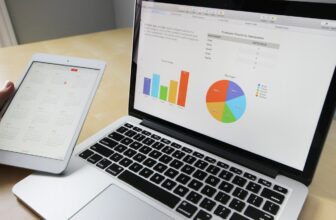How do you set the prices for the items you sell? Do you set them the right way? Let’s have a look at some of the most effective psychological pricing examples to improve your sales.
Price Calculations
If you’re like many business owners, you follow a time-tested equation of combining the true cost of the item with a portion of overhead costs, throwing in a little extra padding so you can make a decent profit.
But there’s one thing that typical cost/profit pricing calculations forget: the human element. It turns out that human psychology can deeply impact the success of your pricing strategy. The concept of “value” is determined more by how people view your products and pricing than the actual cost.
Let’s take a look at some psychological pricing examples and strategies to see if you have an opportunity to adjust your pricing principles.
What Does “Psychological Pricing” Mean?
The term “psychological pricing” refers to methods in which business owners tap into the mental and emotional process of how prices and value are perceived by their audience. This, in turn, can encourage customers’ spending habits with your business, and create life-long brand followers.
However, psychological pricing has to be practiced carefully. The concept of value varies greatly, and customers have been known to be equally wary of prices that they feel are too high or too low.
The easiest way to understand psychological pricing is to look at a few examples and strategies of the concept in action. Let’s take a closer look.
Time Constraints and the Fear of Missing Out (FOMO)
FOMO, or the fear of missing out, is a documented human reaction. Whether it’s the last package of cereal on the shelf or the last day of a huge sale, humans are driven by the urge to take advantage of abundance out of fear of scarcity (more here).
FOMO is tapped into frequently within marketing and advertising due to the power of this innate instinct. How many times have you leapt into action when reading ads that state:
- “One Day Sale!” or,
- “Today Only!”
Most people do, especially if they’re already interested in your product or services. Even if they weren’t actively shopping at the time they received your ad, the moment they realize a significant discount or special product is about to slip through their fingers, they become immediately fascinated.
Creating artificial demand by offering limited deals is a great way to drive customers to buy now. Additionally, this tactic tends to work well for your bottom line, since it inspires many customers to take advantage of your prices simultaneously. The influx of business can be great for profit but remember: sales will likely taper off once the deal has ended.
Charm Pricing
Have you ever wondered why so many retail prices end in 9s? You might see a shirt for $10.99, a chain saw for $199.99, or a book for $24.99. Have you ever wondered why those prices don’t read $11, $200, and $25, respectively?
It doesn’t actually have anything to do with the original cost of the item, commissions, or taxes, as you may have been led to believe. Instead, it’s a tactic known as “charm pricing”.
Items that are priced as $1.99 are seen as a better value than those priced at $2, despite the fact that only a single cent separates the two prices.
Interestingly enough, however, the opposite is also true. If a price ending in .99 is a value, then a price ending in .00 is considered prestigious. Have you ever noticed that luxury items, such as cars, jewelry, high-end fashion, and even exclusive restaurants price their items in whole numbers?
The starting price of a 2022 Lamborghini Countach is $2.64 million, not $2,639,999.99. The plate of fresh-caught clams is $35, not $34.99. The idea of getting the “value” supercar or “value” clams is actually off-putting to consumers in those segments.
Therefore, before you initiate charm pricing, take a moment to consider what you want the price to convey to your customers. Is this a great value, or an exclusive luxury buy?
Innumeracy
Another fascinating human phenomenon is that of innumeracy. It seems that people lose their ability to understand mathematics when it comes to purchasing goods and services.
This has been studied many times by prestigious firms and universities because it sounds so illogical on paper. Surely we understand that a $50 product listed as “Buy one, get one free” works out to be the same price as “50% off two”, right?
Technically, we do. But for some reason, the human brain would rather pay $50 for one full priced item and receive another for free. Paying $25 each for two items is less desirable, even though the total is still $50.
The same phenomenon applies when offering bonus discounts. Let’s say you advertise “All 30% Off Items Now an Additional 10% Off!” You are aware that this means 10% off the sales price. A $100 item marked at 30% off would be $70, and an additional 10% off would mark it down to $63. However, the typical consumer reads that as a grand total of 40% off.
You can also see innumeracy at work in shipping prices. Offers such as “free shipping for purchases over $50!” encourages shoppers to buy more than they might need in order to “save” on shipping costs. However, the math might work out so that the customer would pay less if they purchased only what they needed.
Even the most math-savvy shopper has been stymied by the concept of innumeracy. It seems that our emotional connotation of value is even more powerful than our logical understanding of mathematics!
Read also: How Pain and Promises Inspire Your Customers to Take Action
The Appearance of Price
You may be thinking that surely people are not swayed simply by the way the price of an item looks on a screen or piece of paper. Amazingly, the appearance of a price can convince shoppers of the overall value, as well as their own emotional attachment to spending money.
Have you ever noticed some upscale shops, restaurants, and services dropping the currency sign when advertising their prices? For example, a shirt may have a tag that simply reads “75”, or the menu may mark the plate of clams as “35”.
When we read these prices, our brains do a strange rationalization process that defies logic. If we don’t see the currency sign, we don’t associate it with money. That shirt could cost 75 dollars, euros, or chickens: we can actively convince ourselves to not have the emotional response to spending money if we don’t perceive the cost as being monetary.
Alternately, you may have seen pricing formats like this:
$17.99Logically, we know that this price is just one cent less than $18. If you paid for this item with a $20 bill, you would receive $2.01 in change, not $3. However, due to the appearance of the price, it looks like this item costs just a little bit more than $17.
Color and fonts (more here) can also have an impact on how we perceive the price of an item. Next time you go grocery shopping, consider how the different tags on the shelves impact where your eyes are drawn. Many times, our eyes seek out tags that shout “Special Deal!” or “Clearance!”
Your favorite sauce may be $5, but if the competitor is marked down with a bright yellow tag announcing the price has changed $7 from $12, you might be compelled to try the more expensive sauce just because of the perceived deal you got on it.
Psychological Pricing and Value
The human brain can do some very strange things when it goes shopping. Some of the examples and strategies of psychological pricing fly in the face of logic, but strangely, they work!
Still, one of the major components of perceived value is the actual product or service itself. No matter what pricing you put on an item, your customers need to find value in what they actually receive. Very few things sell themselves on price alone: you need to be able to demonstrate that what you are selling is worth the price, which is the very basis of marketing and business in the first place.
When reviewing your pricing, be sure to target your prices in a range that makes sense for the market, the intended customer, and the product or service itself. While profit is a wonderful thing, there is such a thing as pricing yourself out of business. Remember that value is both a perception and a reality, and that every customer is looking for the best overall deal to ensure your price range is adequate for your customers’ needs.









